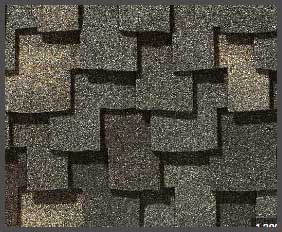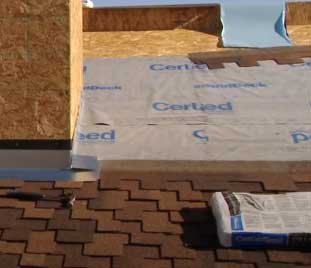Presidential shingles, manufactured by CertainTeed, are among the most popular asphalt shingle options for residential roofing. With their distinctive three-tab design and heavyweight construction, Presidential shingles promise years of protection and curb appeal.
However, as with any roofing product, Presidential shingles can develop issues over time that require repair or replacement. This article explores the most common problems associated with Presidential shingles to help homeowners identify and address potential vulnerabilities.
Overview of Presidential Shingles

Presidential shingles have been a top choice for homeowners for over 30 years. They come with a lifetime limited warranty and are available in a wide selection of popular colors. Presidential shingles are categorized as luxury shingles and are more expensive than standard three-tab shingles.
However, their exceptional durability and visual appeal make them a sound investment for many homeowners.
Some key features of Presidential shingles include:
- Three-tab design with staggered exposure for a dimensional, shake-like appearance
- Heavyweight construction with two full-size fiberglass mats for reinforcement
- High-quality waterproof asphalt sealant to resist leaks
- Excellent wind resistance rating – can withstand winds up to 130 mph
- Class A fire rating for safety
- Algae-resistant design to deter discoloration and streaking
- Wide range of color options including popular earth tones and grays
Common Presidential Shingles Issues
When properly installed, Presidential shingles can last 25-30 years or more. However, there are some vulnerabilities that can lead to premature failure. Being aware of these issues is the first step in preventing problems down the road.
- Blow Offs
One of the most dramatic and dangerous issues that can happen with any shingle is blow offs during high winds. When shingles are blown off by gusts, it leaves large sections of the roof deck exposed.
This allows water intrusion which can lead to extensive interior damage.
Blow offs most commonly occur when the shingles were not properly installed. Nails may have missed the underlying roof deck or the shingles lack adequate adhesion due to a shortage of asphalt sealant strips.
Environmental factors like cold weather installation or moisture beneath the shingles can also inhibit good bonding.
In coastal regions, salt spray and moisture-wicking through the shingles due to humidity and sea fog can further degrade adhesion over time. This expands the risk of shingle blow offs despite proper installation.
To reduce the chances of blow offs, homeowners should ensure their roofer pays careful attention to nailing and sealing during installation. After major windstorms, inspect the roof carefully from the ground with binoculars.
Any lifted or missing shingles should be repaired immediately before additional blow offs occur.
- Granule Loss

Presidential shingles feature a protective layer of ceramic granules embedded in the asphalt.
The granules provide color, reflect UV rays, and shield the asphalt from damage.
Over time, natural weathering and foot traffic across the roof can cause the loss of granules.
Areas of missing granules will appear faded or browner than the surrounding shingles.
Minor granule loss is normal over the shingles’ lifetime. However, significant or premature granule loss can indicate problems. Inadequate asphalt coating during manufacturing can lead granules to detach more easily.
Over-nailing the shingles also damages the granular surface, as does excessive foot traffic for repairs, inspections, cleaning, etc.
To reduce granule loss, limit unnecessary foot traffic on the roof. When granules are coming off in large amounts, examine the shingles for areas of inadequate asphalt coating or nail over-penetration.
These affected shingles will need to be replaced sooner than others to avoid further degeneration.
- Streaking and Discoloration
Even quality shingles like Presidential may develop unsightly dark streaks across their surface over time. This is commonly caused by blue-green algae growth. The algae thrives in the extra nutrients found in asphalt shingles, multiplied by wet weather exposure.
CertainTeed Presidential shingles have algicide built in to deter this problem. However, the algicide effects diminish over time. Areas near overhanging trees, poor attic ventilation, and climate factors can also increase the roof’s moisture content, fueling algae growth.
In other cases, Presidential shingles develop random splotches or strips of off-color shading. This can result from manufacturing defects, specific weathering exposures, or concentrated algae colonies.
Unfortunately, the cause is not always readily identified.
To limit streaking and discoloration, try to minimize moisture contact through proper attic ventilation and gutter cleaning. algicide sprays or roof cleaning solutions may temporarily restore appearance in affected areas. In severe cases of aesthetic damage, full shingle replacement may be required.
- Wind Damage
Presidential shingles are engineered to withstand hurricane-force winds when installed properly. However, extreme weather events can still cause structural damage to the roof.
Tornados, derechos, and cyclonic winds can lift and tear shingles from the nails, bend flashing, and damage the underlying roof deck.
Even when the shingles remain intact, very high winds can shift the decking underneath. This leads to a wavy or uneven appearance along the rooflines. Such damage requires professional assessment and often full roof replacement for proper correction.
To limit wind damage exposure, inspect shingles carefully each spring and after any major storms. Look for loose or separated spots suggesting inadequate nail penetration. Use roofing sealant to re-secure any problem areas before the next high-wind season arrives.
- Ice Damming
In cold climates, Presidential shingles are vulnerable to ice dams along the roof eaves. This occurs when attic warmth melts upper layer snow which then refreezes at the roof edges. The ice buildup traps more melting snow beneath it, allowing water intrusion through the shingles.
Contributing factors include poor insulation, attic air leaks, and lack of sufficient ventilation. Preventing ice dams requires a comprehensive approach:
- Increase attic insulation to at least R-49
- Caulk and weatherstrip all attic access points
- Install baffles along eaves to encourage airflow
- Add more soffit and ridge vents allowing air exchange
- Use heating cables along vulnerable eave lines
Even with preventive measures, older Presidential shingles in icy regions will become prone to ice dam leaks over time as seals deteriorate. Full tear-off and replacement is the ultimate solution.
- Hail Damage
Severe hailstorms can cause extensive roof damage in moments. The impact force tears shingles, dents metal flashings, and fractures roof decks. Early identification of hail damage is key to preventing secondary issues from water infiltration before repairs can be made.
Typical signs of hail damage include:

- Visible punctures or holes through shingles
- Cracked, split, or broken granule surface
- Spongy areas indicating fractures under shingle mats
- Papery creases where impacts partially separated shingle layers
- Dings and damage to siding, vents, skylights, etc. indicating hail hit the roof as well
In cases of severe damage, full roof replacement is required.
For mild to moderate impacts, individual shingles can be replaced as needed.
Timely repairs are crucial to avoid decay of the vulnerable underlayment and decking from moisture exposure.
- Installation Errors
Many roof problems actually stem from installation mistakes rather than inherent issues with the shingles themselves. Common examples include:
- Inadequate nailing leading to loose or lifted shingles over time
- Failure to remove all debris and dirt from the roof deck before shingling
- Skipping the critical underlayment layers and proper drip edge flashing
- Deviation from the manufacture’s specified nailing pattern
- Little or no use of sealing asphalt at seams, valleys, and pipes/vents
- Rushing the job and cutting corners instead of following best practices
Even high-quality Presidential shingles cannot compensate for improper installation. The result will be a roof more vulnerable to leaks, wind damage, and premature aging.
Always hire competent roofers who follow manufacturer guidelines exactly. A small upfront investment in proper installation prevents exponentially larger repair costs down the road.
Frequently Asked Questions (FAQ)
With proper installation and average weather conditions, Presidential shingles can last 25-30 years or more. Lifespans exceeding 30+ years are not uncommon in regions with low humidity, mild winters, and minimal hail exposure.
The premium invested for Presidential shingles pays dividends over time in enhanced curb appeal, durability, and weather protection. The warranty and resistant materials make them more cost-effective long-term than basic 3-tab shingles.
Presidential shingles differ from standard 3-tab in their heavyweight construction, high-profile design, and luxury class. The fiberglass mats, asphalt sealant, and impact guard granules are higher grade compared to basic shingles. These features add strength, weather resistance, and longevity.
Granule loss is the most prevalent issue affecting asphalt shingle roofs. Minor granule loss is normal over time. Excessive loss indicates problems like inadequate asphalt coating, over-nailing, or excess foot traffic. Replacing individual damaged shingles can restore appearance and function.
Closing Remarks
Presidential shingles offer many advantages thanks to CertainTeed’s quality manufacturing and exceptional warranties. However, residential roofing products of any type face unavoidable wear and tear over decades of service.
Being proactive to identify and address problems early helps Presidential shingles achieve their maximum roofing potential. With proper installation, maintenance, and prompt repairs as needed, Presidential shingles will protect your home in style for years to come.
